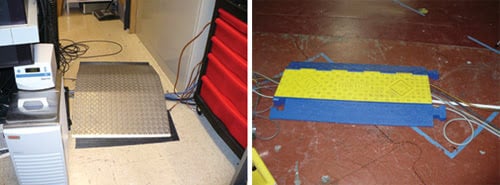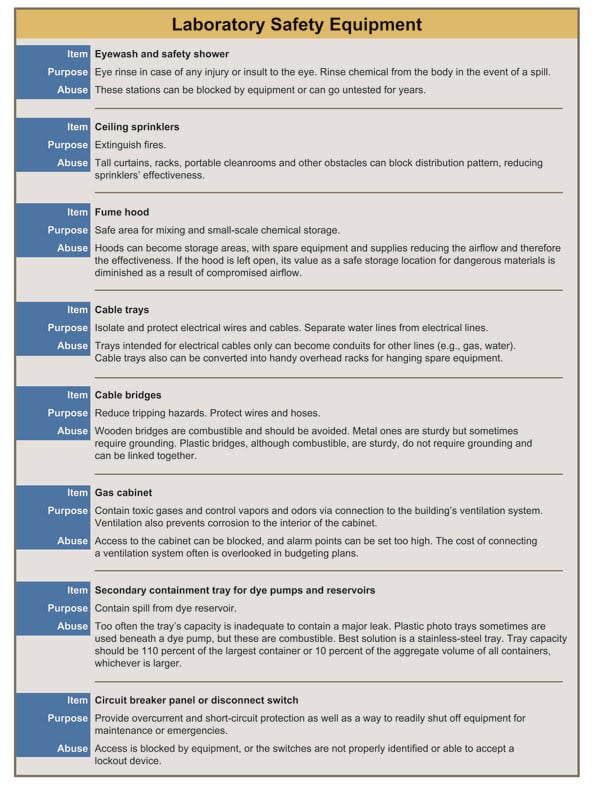It’s important to pay close attention to nonlaser hazards in the laboratory.
Ken Barat and Betsy MacGowan, Lawrence Berkeley National Laboratory
The ANSI Z136.1 standard has a sizable section about non-beam hazards in the photonics laboratory. What it tells us is that tunnel vision can be dangerous. If we’re focused only on hazards associated with laser beams, we leave ourselves open to a host of other accidents. For example, the danger of electrocution exists even if laser eyewear is worn.

Metal cable bridges are sturdy but sometimes require grounding (left). Plastic bridges, although combustible, are sturdy and do not require grounding (right).
Most nonbeam hazards are right in front of us: Electrical and chemical threats are the most common, but others, such as labeled or unlabeled magnets, can creep into the workplace. These authors have seen accidents precipitated by the interaction between screwdrivers and the magnets in a Faraday rotator. Magnets can be large or small, and strong or weak, but they should not be ignored. Magnets also can erase credit cards or can affect metal implants in the body.
Another nonbeam hazard is improper lifting. When a 75-lb optical breadboard or experimental chamber must be moved, recognizing when help is needed and employing appropriate lifting techniques can save one from a lifetime of physical therapy. Here is a brief review of lifting rules you surely already know: Test the weight before lifting, get help with large or awkward objects, bend at the knees, avoid twisting your body, and check the path you’re going to take before lifting.

In previous columns, we’ve discussed safety equipment to prevent beam-related hazards. But your laboratory’s safety equipment should not be limited to those items. The table on the next page lists other items you should think about.
In conclusion, please look around your work area with a new awareness: Have you addressed your nonbeam hazards? The abuse examples given often are OSHA fee violations. Appreciate your safety equipment and consider its various components to be silent sentries waiting to serve, just as your humble laser safety officer is.
Meet the authors
Betsy MacGowan is an industrial hygienist, and Ken Barat is the laser safety officer, at Lawrence Berkeley National Laboratory in Berkeley, Calif.; e-mail: [email protected].